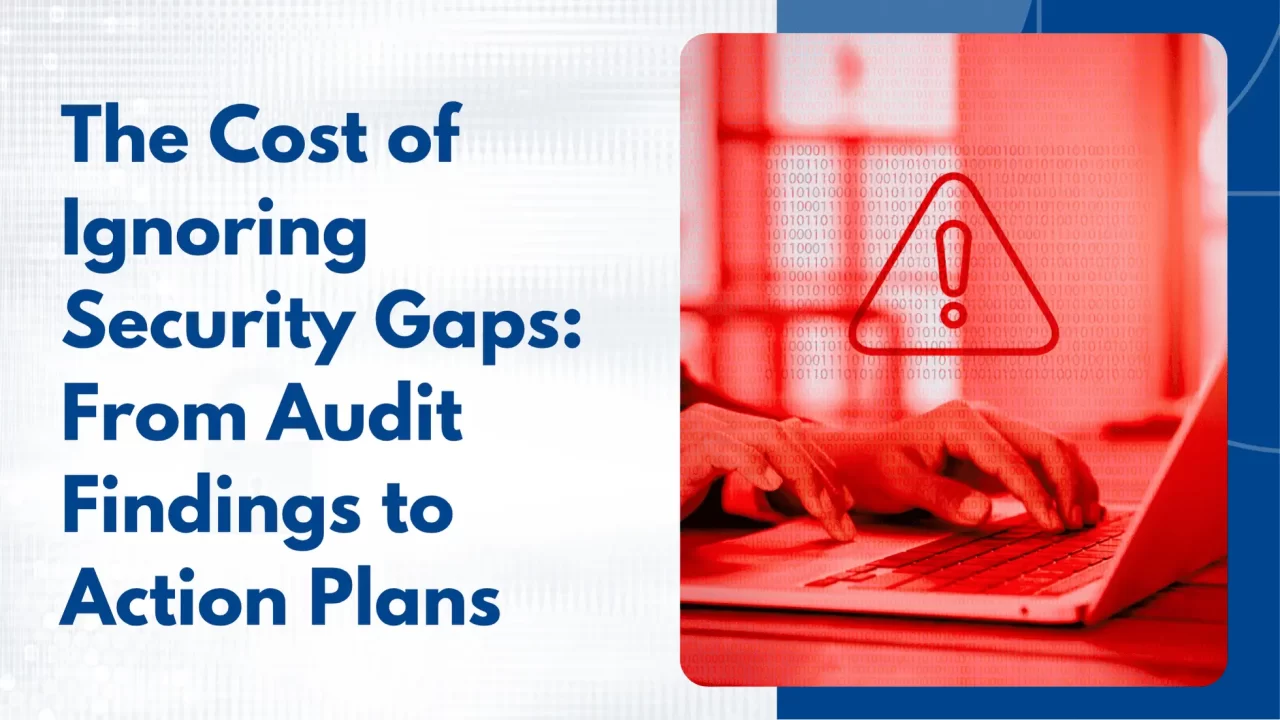Every cybersecurity audit reveals insights—some expected, others alarming. But what happens next often determines the real value of an audit. Many organizations invest in security assessments but fall short in acting upon the findings. The result? Security gaps persist, risks escalate, and compliance issues mount.
In this blog, we explore the hidden costs of ignoring security gaps, how to turn audit findings into actionable strategies, and how closing those gaps strengthens both cybersecurity posture and regulatory compliance.
Why Security Gaps Shouldn’t Be Ignored
- Small Gaps Become Big Breaches
Seemingly minor issues—like an unpatched system or a misconfigured firewall—can be exploited by attackers. Many major breaches originate from vulnerabilities that were already known but left unresolved.
- Repeated Audit Failures
Failure to act on previous findings can lead to repeated audit issues, eroding stakeholder confidence and signaling poor governance.
- Compliance Risks
Regulatory frameworks such as ISO 27001, GDPR, HIPAA, and PCI DSS require organizations to not only assess but remediate identified risks. Ignoring audit findings can lead to fines, penalties, and reputational damage.
- Missed Opportunities for Improvement
Audit findings often provide a roadmap for improving processes, policies, and infrastructure. Ignoring them means missing out on opportunities to enhance resilience.
- Operational Disruption and Financial Loss
Unaddressed gaps can lead to incidents that disrupt operations and result in unplanned costs—from downtime to legal expenses and crisis communication.
Common Security Gaps Identified During Audits
- Outdated or unsupported software
- Weak password policies and access controls
- Unsecured cloud storage or APIs
- Lack of employee awareness and training
- Poorly documented incident response plans
- Inadequate logging and monitoring
- Absence of regular patch management
Each of these gaps represents a potential attack vector that can be exploited if not addressed.
How to Turn Audit Findings into Action Plans
- Prioritize Findings by Risk Level
Not all findings require the same urgency. Use a risk-based approach to categorize findings by likelihood and impact. Focus first on critical and high-risk vulnerabilities.
- Assign Clear Ownership
Each remediation task should have a defined owner, deadline, and success criteria. Involve cross-functional teams—IT, compliance, legal, and HR—to ensure shared responsibility.
- Break Down Tasks into Actionable Steps
Large findings can seem overwhelming. Break them into smaller steps: identify the fix, allocate resources, schedule implementation, and track progress.
- Integrate with Risk Management Processes
Ensure that audit findings feed into your organization’s broader risk register and are included in enterprise risk assessments. This keeps leadership informed and invested.
- Use Technology for Tracking and Automation
Leverage GRC platforms, ticketing tools, or dashboards to track remediation efforts, send reminders, and report progress to stakeholders.
- Validate Fixes and Document Evidence
Don’t just assume fixes are complete—verify through testing, scans, or internal audits. Keep records of the steps taken for regulatory audits.
- Educate and Engage Staff
Often, audit findings reveal process gaps that require cultural change. Use training, workshops, and internal campaigns to raise awareness and promote best practices.
Bridging the Gap Between Assessment and Remediation
Vanaps helps organizations not only perform cybersecurity audits but also close the loop with tailored action plans. Our Security Assessment Solutions are designed to:
- Identify weaknesses across infrastructure, cloud, and endpoints
- Map findings to regulatory standards like ISO 27001
- Deliver prioritised and actionable recommendations
- Support implementation with expert advisory
Explore our Security Assessment Solutions to see how we bridge strategy with execution.
Conclusion
A cybersecurity audit is only as valuable as what comes after. Ignoring security gaps is a gamble no modern organization can afford. From reputational fallout to financial losses, the risks are real—and preventable.
By transforming audit findings into focused action plans, organizations not only strengthen their defenses but also demonstrate a proactive, responsible approach to cyber risk management.
Don’t let your next audit become another unchecked checklist. Contact us to learn how we can help you close the gaps and build long-term resilience.



